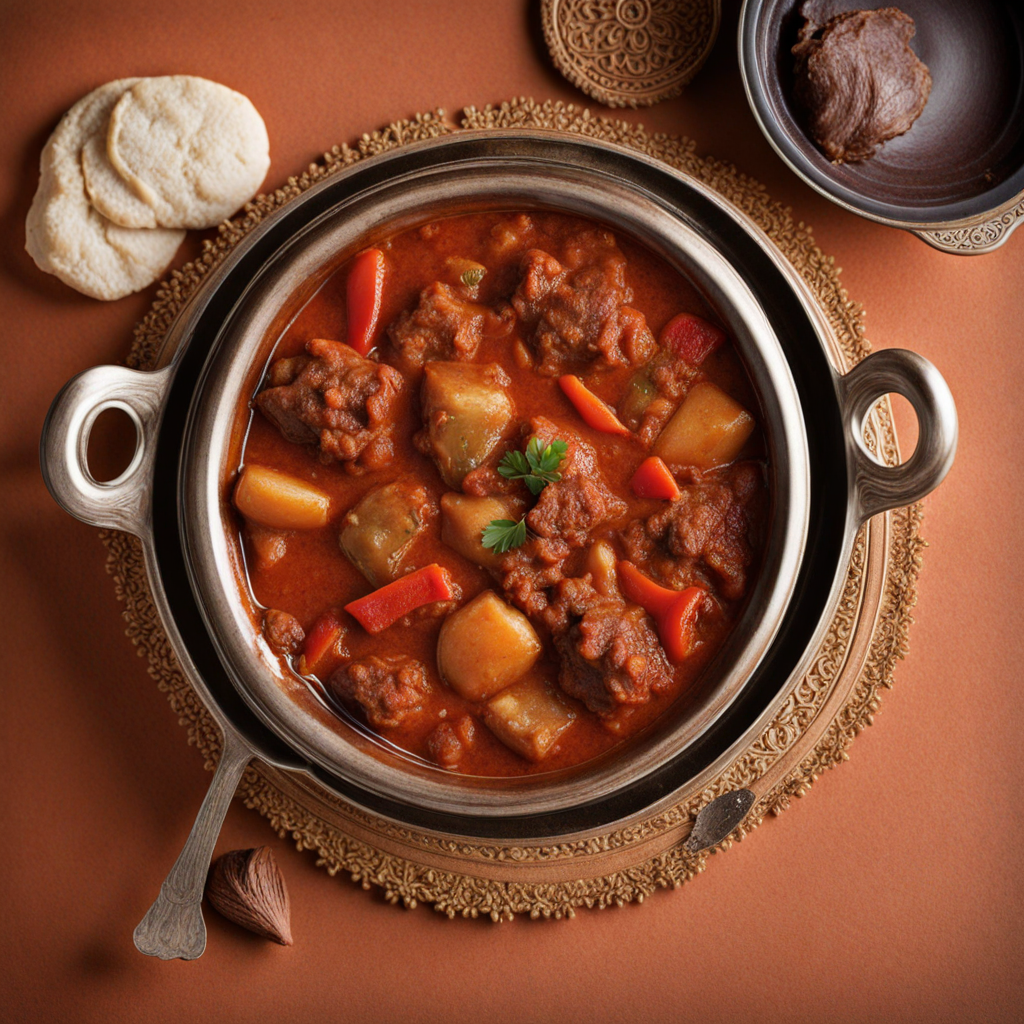Brik
Brik is a delightful Tunisian pastry that captures the essence of North African cuisine with its flaky, golden exterior and savory filling. Typically made with thin layers of dough known as 'malfouf' or 'brik pastry', this dish is deep-fried to crispy perfection. The texture is light and crunchy, providing a satisfying contrast to the rich and flavorful fillings that lie within. Traditionally, brik is shaped like a triangle or a cone, making it not only a delicious snack but also visually appealing, perfect for sharing or enjoying as street food.
How It Became This Dish
Bric: A Culinary Gem of Tunisia Origins Bric, often referred to as "brik" (or "borek" in some regions), is a beloved Tunisian dish that has a rich history and cultural significance deeply rooted in the Mediterranean culinary tradition. While its exact origins are somewhat obscure, it is widely believed that brik draws inspiration from the Ottoman Empire's influence in North Africa, particularly during the 16th and 17th centuries. This period saw the introduction of various culinary practices and ingredients that would shape the region’s gastronomy. The dish typically consists of a thin, flaky pastry, akin to phyllo dough, which is wrapped around various fillings before being deep-fried until crispy. The filling can vary widely, but traditional brik often features a combination of egg, tuna, capers, and parsley, showcasing the flavors of the Mediterranean. Over time, it has also incorporated local ingredients, adapting to the tastes and preferences of the Tunisian people. Cultural Significance In Tunisia, brik is more than just a dish; it is a symbol of hospitality and celebration. It is commonly served as an appetizer during special occasions such as weddings, Ramadan, or family gatherings. The act of preparing brik often brings families together, with the preparation process being a communal activity that strengthens familial bonds. The significance of brik extends beyond its culinary appeal; it embodies the essence of Tunisian culture. The dish reflects the country’s historical crossroads, where Berber, Arab, and Mediterranean influences converge. Each bite offers a taste of Tunisia’s diverse heritage, making it a culinary representation of the nation itself. Development Over Time Over the centuries, brik has evolved, adapting to changing tastes, available ingredients, and culinary techniques. The traditional brik, with its classic fillings, has remained popular, but modern interpretations have emerged, showcasing the creativity of contemporary Tunisian chefs. In the early 20th century, as Tunisia underwent significant social and political changes, the culinary landscape began to reflect these transformations. The introduction of new ingredients, such as spices and vegetables, led to innovative variations of brik. For instance, some recipes now include spicy harissa, a fiery chili paste that adds depth and heat to the dish. Additionally, the use of local seafood has become popular, with brik filled with shrimp or calamari, highlighting Tunisia’s coastal geography. The rise of tourism in Tunisia has also influenced the way brik is perceived and prepared. As international visitors flocked to the country, chefs began to experiment with flavors and presentations to cater to diverse palates. This fusion of traditional and modern elements has resulted in a broader interpretation of brik, with variations that appeal to both locals and tourists alike. Regional Variations While brik is a staple across Tunisia, regional variations reflect the diverse culinary practices within the country. In the coastal areas, brik may be filled with fresh seafood, while inland regions might feature heartier fillings, such as spiced meat or vegetables. Each region adds its unique touch, showcasing local ingredients and culinary traditions. In addition to its variations, brik has also inspired similar dishes in neighboring countries. In Algeria and Morocco, for example, you can find similar fried pastries known as "borek," which often feature different fillings and spices. This cross-cultural exchange further illustrates the interconnectedness of North African cuisines and the shared history of the region. Modern Trends and Global Influence In recent years, brik has gained international recognition, as the global food movement has led to increased appreciation for authentic and traditional cuisines. Chefs and food enthusiasts around the world have begun to explore Tunisian cuisine, with brik often serving as a gateway dish. Its crispy exterior and flavorful fillings make it a popular choice at Middle Eastern and Mediterranean restaurants globally. Social media has played a significant role in popularizing brik, with food bloggers and influencers showcasing their creations and variations. This exposure has led to a resurgence of interest in traditional Tunisian recipes, encouraging a younger generation to embrace their culinary heritage while also experimenting with modern twists. Conclusion Bric is more than a mere dish; it is a culinary narrative that encapsulates Tunisia’s rich history, cultural significance, and evolving identity. From its origins during the Ottoman Empire to its modern interpretations in today’s global cuisine, brik serves as a delicious reminder of the interconnectedness of food and culture. Each bite is an invitation to explore Tunisia’s diverse culinary landscape and the stories that have shaped it over centuries. As both a symbol of celebration and a testament to Tunisia’s resilience and adaptability, brik will undoubtedly continue to hold a special place in the hearts and palates of Tunisians and food lovers around the world. Whether enjoyed at a family gathering, during Ramadan iftar, or as a trendy dish in a contemporary café, brik remains a shining example of Tunisia’s culinary legacy, bridging the past with the present and inviting all to savor its unique flavors.
You may like
Discover local flavors from Tunisia







